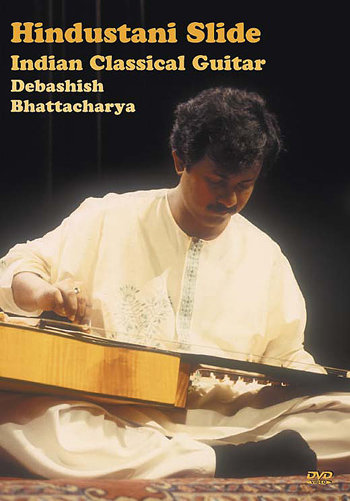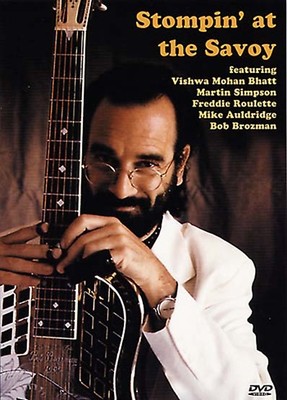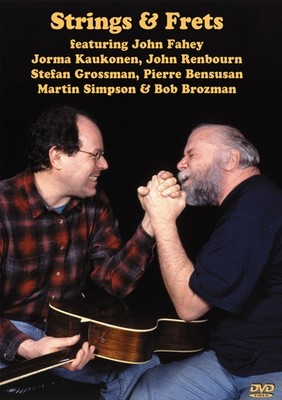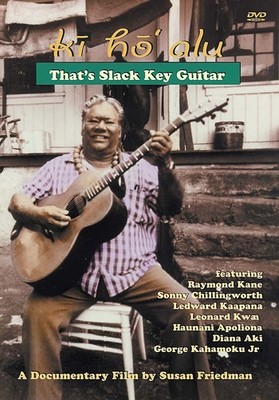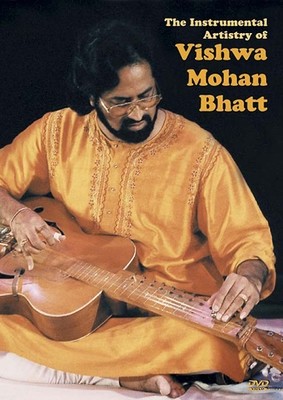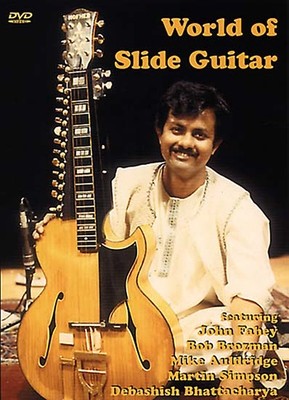
Hindustani Slide - Indian Classical Guitar (only available as a Direct Download)
North India's classical music, often called Hindustani as distinct from South India's Karnatak classical music, is one of the world's richest musical traditions. Its highly developed system of melody (raga) and rhythm (tala) provides a framework for breathtaking improvisatory flights in the hands of such masters as sitarist Ravi Shankar and sarodist Ali Akbar Khan. India's traditional stringed instruments have recently been joined by the guitar as a means to express the riches of Hindustani music. The slide approach to guitar has become a medium for the purest Hindustani music since it has such an uncanny knack for appoximating the instrument that Indians hold in highest esteem -- the human voice.
The son of Hindustani vocalists, Debashish Bhattacharya began playing guitar at age three, and has become one of India's leading concert guitarists. Accompanied by tabla master Kumer Bose, a frequent accompanist of Ravi Shankar, Bhattacharya's performance captures both the subtlety and astonishing virtuosity inherent in the Hindustani tradition. The fact that he does so on a guitar "Indianized" with sympathetic strings and a unique placement of the rhythmic chikari strings, has led Bhattacharya to christen his instrument the Dev Veena. One of Calcutta's best known concert halls, Max Muller Bhawan, was the site of this performance.
Running time: 80 minutes
Review: This fascinating video chronicles a performance by Debashish Bhattacharya on perhaps the strangest looking guitar in history. Played lap-style with a high bridge like the American dobro, its fret board accommodates only five strings instead of the usual six. But these are augmented in the Indian fashion by sympathetic drone strings along the high, or thumb side of the neck and rhythmic chikari strings running beside the fingerboard on the other side. Fretting with an iron bar, Bhattacharya achieves an incredible range of rhythmic and timbral effects, with particular emphasis on the vocal quality Indian classical music shares with American blues. His improvisations never repeat or get stale, and his phrasing and touch are remarkably sure and convincing.
The ensemble includes the sympathetic tabla drummer Kumar Bose, whose accompaniment never overpowers the guitar. The film is shot simply but effectively from several angles, on a multicolored set that adds to the sense of wonder produced by this strange and magical instrument. Liner notes are copious and well-researched, citing previous Indian guitarists and native Indian instruments. They make the case that the sonorities of slide guitar are not new on the subcontinent, as do the artists themselves. – Sing Out!
Review: The use of slide guitar in Indian classical music has recently come to be known in the West, largely through the recordings of Vishwa Bhatt. This 80-minute video, beautifully filmed in Calcutta, documents a complete concert performance by Debashish Bhattacharya, another master of this style, accompanied here by his sister, Sutapa Bhattacharya, on tambura, and Kumar Bose on tablas.
Bhattacharya's guitar is a marvel itself, with 16 drone strings grafted onto a relatively conventional Hawaiian guitar body. He performs with a relatively standard guitar slide and a thumbpick and two fingerpicks on his right hand. The music performed consists of three selections, a brief dhun based on Raga Kirwani, and two ragas "Gurjara Todi" and the extended "Raga Charukeshi." It is very enlightening to see how Bhattacharya uses glissando with his slide to create a sound that is texturally very similar to that of the sitar, and indeed his music sounds much more like classical Indian music performed on traditional instruments than it does any form of western slide guitar. This well-produced video provides a nice introduction into this relatively esoteric branch of guitar wizardry. – Dirty Linen
